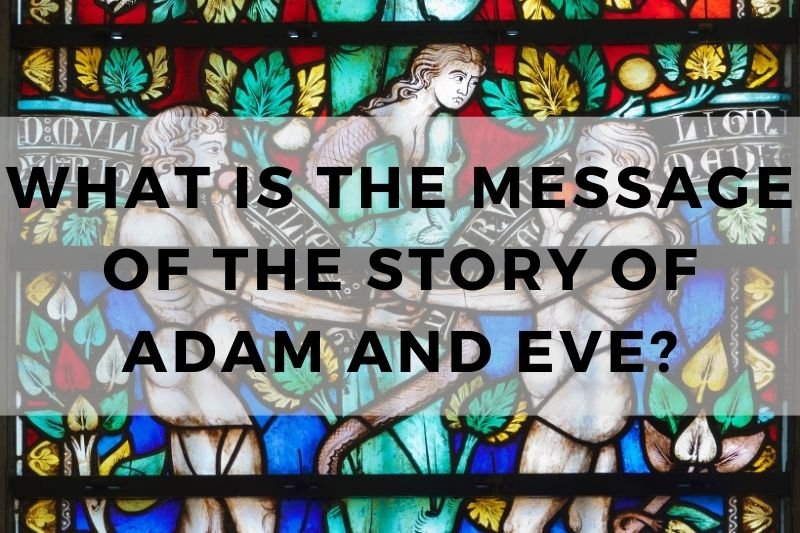
The story of Adam and Eve is foundational in the Bible, offering insights into fundamental aspects of human existence. It’s not just a tale of the distant past but a narrative that resonates with enduring truths about life, relationships, and the human condition.
Understanding its message is crucial for anyone seeking to grasp the core principles of Judeo-Christian theology. In this article, we will delve into the key themes of the Adam and Eve story, shedding light on its significance and relevance for contemporary life.
The Story of Adam and Eve: An Introduction
The story of Adam and Eve is recounted in the Book of Genesis, the first book of the Bible. It serves as the origin story for humanity, depicting the creation of the first man and woman by God. According to the narrative, God fashioned Adam from the dust of the earth and breathed life into him, making him a living being. Subsequently, God created Eve from one of Adam’s ribs, establishing her as Adam’s partner and companion.
This foundational story sets the stage for understanding the relationship between humanity and the divine. It portrays God as the ultimate creator and sustainer of life, with humanity occupying a special place in the order of creation. Through the creation of Adam and Eve, the story highlights humanity’s unique status as beings made in the image of God, endowed with reason, moral agency, and the capacity for relationship.
Furthermore, the story of Adam and Eve introduces themes of intimacy and companionship, illustrating the significance of human relationships. God’s provision of Eve as a companion for Adam underscores the importance of partnership and mutual support in the human experience. Additionally, the story lays the groundwork for exploring the complexities of human nature, including desires, temptations, and the consequences of choice.
In the following sections, we will unpack the rich tapestry of themes woven throughout the Adam and Eve narrative, delving into its profound implications for theology and human life.
Message of the Story of Adam and Eve
#1. Creation
The story of Adam and Eve begins with the act of creation, emphasizing God’s role as the supreme creator of the universe. Genesis 1:27 declares, “So God created mankind in his own image, in the image of God he created them; male and female he created them.” This verse underscores the divine origin of humanity and the inherent dignity and value of every individual.
#2. Humanity’s Relationship with God
Adam and Eve’s relationship with God is characterized by intimacy and dependence. In the Garden of Eden, they enjoyed direct communion with their Creator, walking and talking with Him in the cool of the day (Genesis 3:8). This closeness reflects the ideal relationship between humanity and God, marked by trust, obedience, and reverence.
#3. Free Will and Choice
Central to the story of Adam and Eve is the theme of free will and choice. God placed one restriction upon them—the command not to eat from the tree of the knowledge of good and evil (Genesis 2:16-17). This prohibition presented Adam and Eve with a choice, highlighting the reality of moral agency and the consequences of their decisions.
#4. Sin and Consequences
Tragically, Adam and Eve disobeyed God’s command, succumbing to the temptation presented by the serpent (Genesis 3:6). Their act of disobedience, often referred to as the Fall, introduced sin and its consequences into the world. Romans 5:12 succinctly states, “Therefore, just as sin entered the world through one man, and death through sin, and in this way death came to all people, because all sinned.”
#5. Redemption and Hope
Despite humanity’s fall into sin, the story of Adam and Eve offers a glimmer of hope through the promise of redemption. In Genesis 3:15, God declares to the serpent, “And I will put enmity between you and the woman, and between your offspring and hers; he will crush your head, and you will strike his heel.” This prophecy foreshadows the ultimate victory of Christ over sin and death, providing hope for humanity’s restoration.
#6. Gender Roles and Relationships
The story of Adam and Eve also touches upon gender roles and relationships within the context of marriage. Genesis 2:24 states, “That is why a man leaves his father and mother and is united to his wife, and they become one flesh.” This verse highlights the complementary nature of male and female, as well as the institution of marriage as ordained by God.
Closing Thoughts
The story of Adam and Eve serves as a foundational narrative in Judeo-Christian theology, offering profound insights into the nature of humanity, the relationship between humanity and God, and the consequences of sin.
Through its exploration of themes such as creation, free will, and redemption, this ancient story continues to resonate with timeless truths about the human condition. By reflecting on its message, we gain a deeper understanding of our identity, purpose, and the enduring hope found in God’s redemptive plan.
